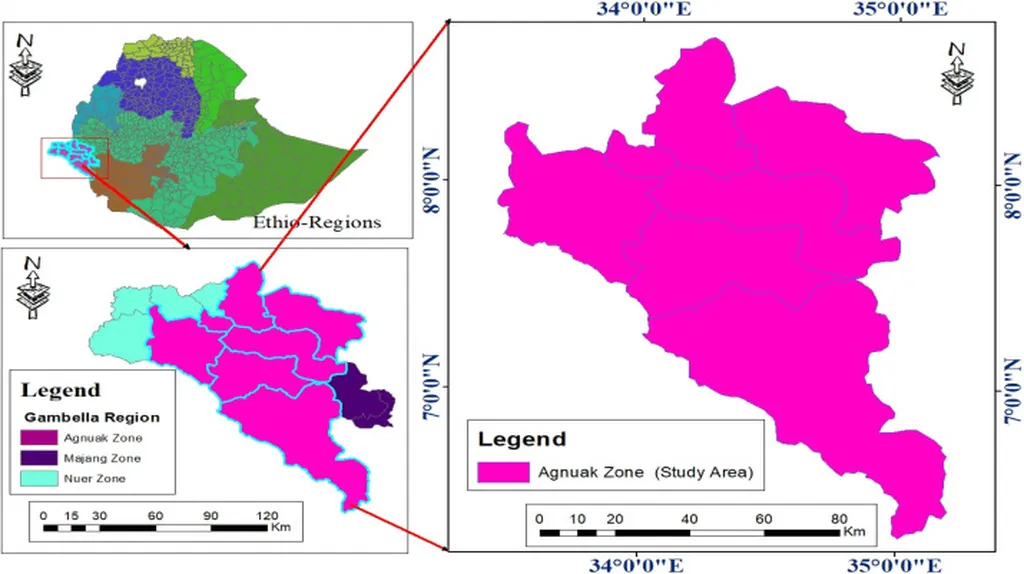In the lush, biodiverse landscapes of southwestern Ethiopia, a groundbreaking study is paving the way for a new kind of eco-tourism that could transform local economies and conservation efforts. Published in *Scientific African*, the research, led by Eskinder Belay Tefera from Jimma University, employs a sophisticated geospatial and multi-criteria decision-making approach to identify prime locations for avitourism—tourism centered around birdwatching. This method could serve as a blueprint for sustainable development in regions rich in avian diversity.
The study, which focused on the Agnuak Zone in Gambella, integrated data from digital elevation models, topographic maps, and field observations with qualitative insights from local communities. Using the Analytical Hierarchy Process (AHP), researchers evaluated seven key criteria, including protection status, land use type, proximity to settlements, and road access. The results were striking: over 87% of the study area was deemed suitable for avitourism, with 56.4% classified as very high suitability and 30.6% as high suitability.
“This study offers a replicable framework for community-based conservation,” said lead author Eskinder Belay Tefera. “By integrating local ecological knowledge with advanced GIS tools, we can create sustainable livelihood opportunities while protecting critical bird habitats.”
The findings are particularly timely, as Ethiopia’s rich avian biodiversity—home to over 920 bird species, including 19 endemics—remains largely untapped for tourism. The Agnuak Zone, situated between Gambella, Omo, and Boma National Parks, is a strategic corridor for bird migration and biodiversity. The study highlights the potential for avitourism to diversify local economies, reducing reliance on agriculture and mitigating habitat destruction.
For the agriculture sector, this research presents a unique opportunity. Avitourism can create complementary income streams for farmers and rural communities, fostering a more resilient economic landscape. By developing birdwatching trails, lodges, and guided tours, local businesses can attract eco-conscious travelers, thereby reducing pressure on agricultural lands and promoting sustainable land use practices.
The study also underscores the importance of co-management models, where local communities play an active role in conservation and tourism development. This approach not only ensures that benefits are equitably distributed but also fosters a sense of stewardship among residents. As Tefera noted, “Co-management models can help reduce pressure on critical bird habitats while providing economic incentives for conservation.”
The research aligns with broader regional and continental goals, including Ethiopia’s National Biodiversity Strategy and the African Union’s Agenda 2063 for sustainable development. By leveraging geospatial tools and participatory approaches, the study offers a scalable model for other biodiverse regions in Africa and beyond.
As the world increasingly seeks sustainable travel options, avitourism could emerge as a powerful tool for conservation and economic development. The insights from this study provide a roadmap for policymakers, conservationists, and entrepreneurs to harness the potential of birdwatching tourism, ensuring that both people and wildlife thrive. With further investment and community engagement, southwestern Ethiopia could become a global hotspot for avitourism, setting a precedent for similar initiatives worldwide.

